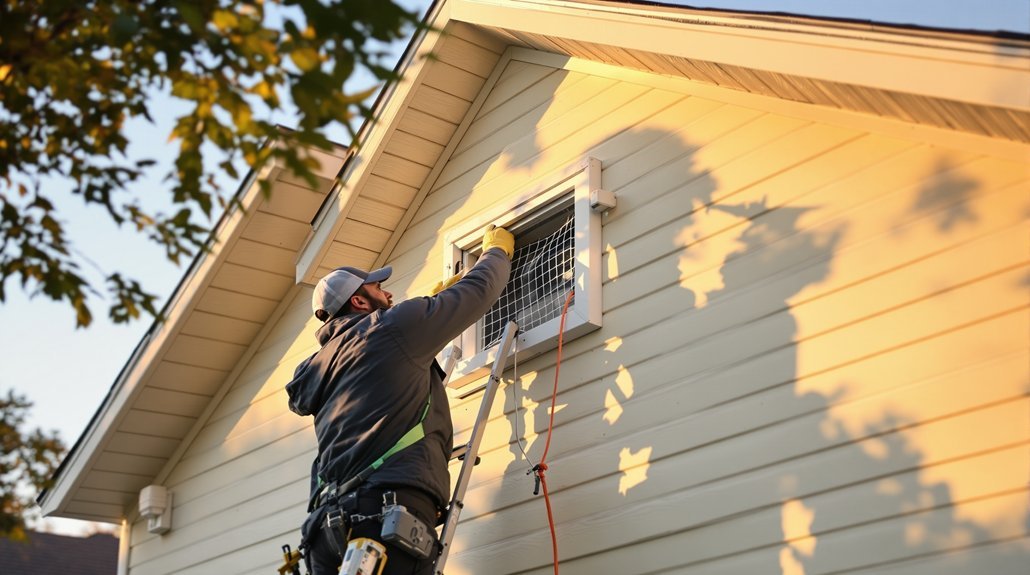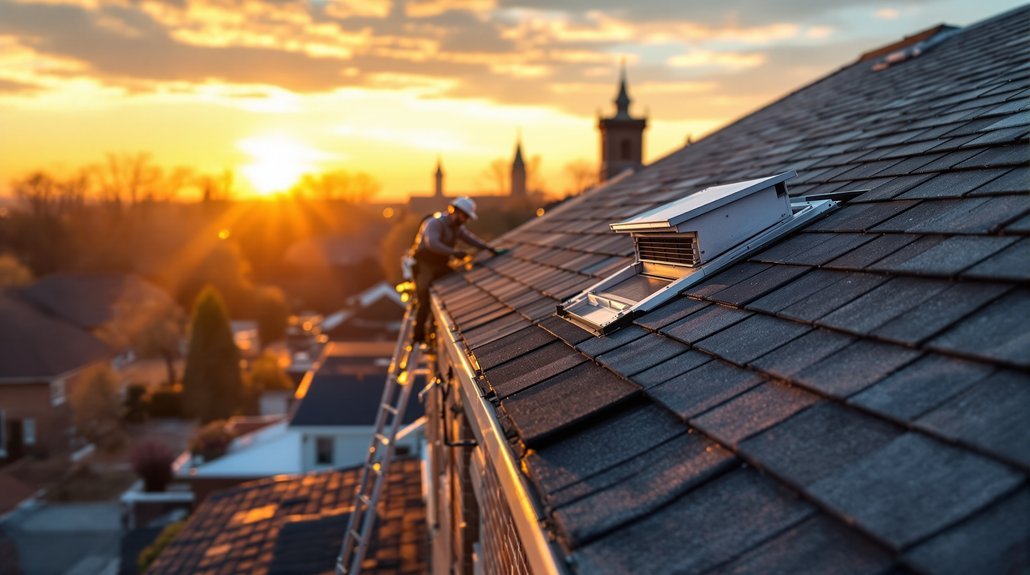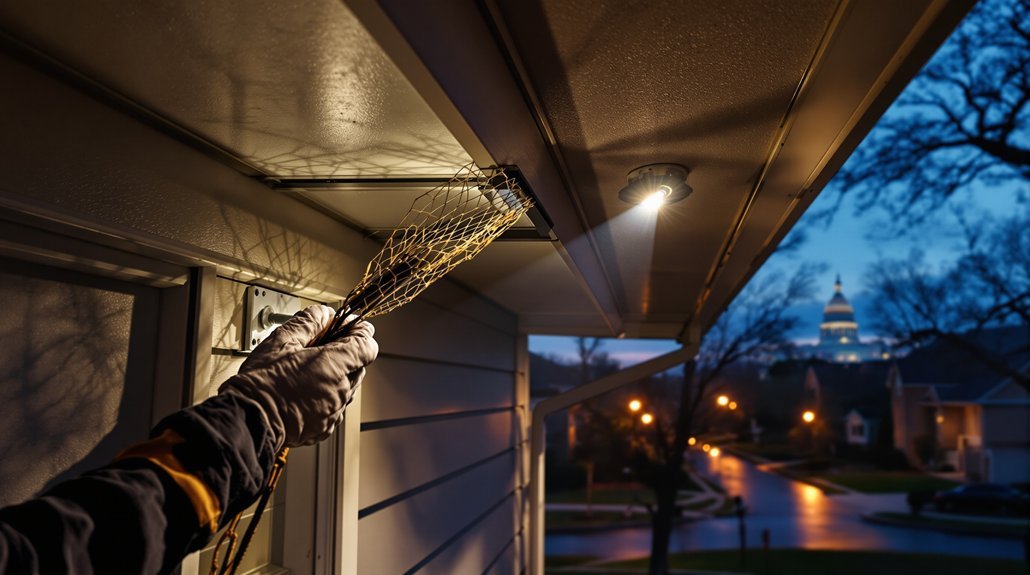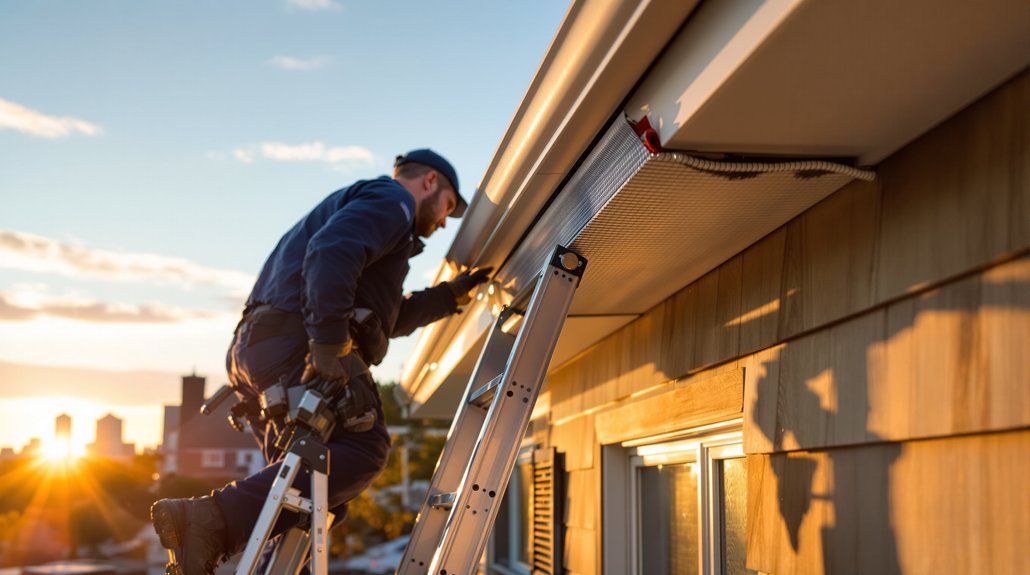In Des Moines, Iowa, laws protect bats and restrict their exclusion. Property owners must follow state regulations when removing bats. It is best to use approved exclusion methods and consult local ordinances, which may require permits. The most suitable time for exclusion is late summer or early fall, aiming to seal entry points afterward. Following these rules is essential for bat survival and legal compliance. More details on best practices and professional help can provide further guidance.
Key Article Highlights
- Bat species are protected by state laws, which restrict habitat disruption and mandate safe exclusion practices.
- Permits may be required for bat exclusion work in Des Moines to ensure compliance with local regulations.
- Exclusion is best performed in late summer or early fall to minimize impact on bat populations.
- One-way exclusion devices must be used to allow bats to exit safely without re-entry.
- Consulting local authorities is essential to understand specific legal requirements and ensure ecosystem health.
Understanding Bat Species and Their Legal Protections

What makes bat species important in Des Moines, Iowa? Bats play a key role in the local ecosystem. They help control insect populations, reducing the need for chemical pesticides. Understanding bat habitat is vital for their survival. Bats often roost in trees, buildings, and caves. Identifying different species is essential for conservation efforts. In Des Moines, common species include the little brown bat and the big brown bat. Accurate species identification helps in evaluating their population and health. This knowledge guarantees that proper measures are taken to protect their habitats. Proper removal and species-specific management are necessary to ensure their continued survival while protecting human health. Legal protections exist to safeguard these bats, highlighting their importance in the environment. It is also crucial to understand the timing of exclusions to avoid harming young bats during their vulnerable stages. Preserving bat species benefits both nature and community by promoting a balanced ecosystem.
State Regulations on Bat Exclusion

While many homeowners in Des Moines may wish to exclude bats from their properties, state regulations govern the methods and timing of such actions. It is important to understand that bats are protected by law, and disrupting their habitat can lead to legal issues. Homeowners must use approved exclusion equipment to safely and humanely remove bats. The best time to perform bat exclusion is in late summer or early fall, as this minimizes harm to young bats. Homeowners should also ensure that all entry points are sealed after exclusion to prevent re-entry. Knowing these regulations helps ensure that bat exclusion is done correctly and legally while protecting both the bats and the homeowner’s interests.
Local Ordinances in Des Moines

Local ordinances in Des Moines also play a role in bat exclusion. These local laws help protect bat habitats while regulating how residents deal with bats. Before any bat exclusion work begins, property owners may need to obtain exclusion permits from the city. This guarantees that the methods used do not harm the bats or their homes. The ordinances aim to balance the needs of the community with wildlife protection. Individuals should check with local authorities to understand specific requirements related to bat exclusion. Following these regulations is important for maintaining a healthy ecosystem in Des Moines. Awareness of local laws can guide residents in effectively managing bat populations while ensuring compliance with city rules.
Best Practices for Bat Exclusion
When dealing with bat exclusion, it is vital to guarantee both effectiveness and compliance with local laws. Successful exclusion techniques focus on understanding bat habitat and preventing access to structures. First, identify entry points and seal them using appropriate materials. Second, install one-way exclusion devices to allow bats to exit but not re-enter. Finally, remove potential food sources near the property.
| Step | Description |
|---|---|
| Identify Entry Points | Locate all possible access areas. |
| Seal Openings | Use durable materials to close gaps. |
| Install Exclusion Devices | Allow bats to exit safely. |
These practices help guarantee a safe environment while respecting the local wildlife regulations. Following best practices is vital for effective bat exclusion.
When to Seek Professional Help for Bat Removal
Understanding the best practices for bat exclusion can help homeowners manage their properties effectively. Homeowners should seek professional help for bat removal when they discover a significant bat habitat in their attic or walls. If a colony is present, it can be challenging to remove them safely without expert assistance. Additionally, if homeowners are unsure about exclusion costs or the best methods for exclusion, consulting a professional is wise. Ignoring bats can lead to health risks and property damage. Professionals can ensure that the bats are removed humanely and that entry points are properly sealed. Homeowners must prioritize safety and legality when dealing with wildlife, making professional guidance essential in these situations.

